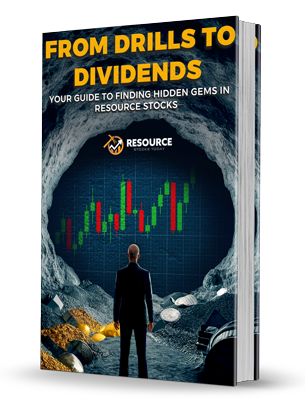Gold Equities: A Once-in-a-Lifetime Opportunity?
In the highly volatile world of commodities and resource stocks, few commodities trigger as much debate—and excitement—as gold. Recently, veteran gold stock analyst Don Durrett has entered the discourse with a bold prediction: he claims that gold equities are “unbelievably mispriced” and advocates for a forward-looking valuation model that forecasts gold prices soaring to $4,000 per ounce.
The Prognosis for Gold Prices
Durrett’s assertions are not without a strong foundation. In a recent podcast appearance, he emphasized the prospect of an impending bond market collapse as a potential catalyst for gold’s resurgence. He argues that precious metals will regain their position as “true value anchors,” a sentiment that resonates particularly well in today’s uncertain economic climate. Notably, his insights come with a stamp of credibility, thanks to the endorsement of Eric Sprott, a renowned Canadian billionaire investor. Since establishing his research platform in 2004, Durrett has devoted his career to tracking gold mining investments, giving him both experience and expertise in this niche market.
A New Perspective on Valuation
Unlike many mainstream analysts who focus on near-term financial metrics, Durrett adopts a forward-looking approach. He asserts that the current metrics underestimate the potential for gold and silver prices to significantly rise—to $4,000/oz for gold and $100/oz for silver. This method not only evaluates the scalability of future production but also assesses long-term cash flow potential. In his view, as the bond market struggles, commodities like gold will assert their true pricing function, creating what he terms a “once-in-a-lifetime trade opportunity.” As we analyze market trends, it becomes evident that the conditions for a potential precious metals supercycle are materializing.
A Strategic Focus on Undervalued Stocks
In line with his optimistic outlook, Durrett outlines a focused strategy: he recommends steering clear of volatile short-term trading options in favor of deeply undervalued gold producers. His targets are the so-called “five-bagger” stocks—those with the potential for 500% returns—and ideally, he seeks “ten-bagger” stocks, which could yield 1,000% returns. This approach prioritizes established producers, whom Durrett believes are on more solid ground compared to exploration firms.
The Triple Growth Engines of Mining
What sets the established producers apart, according to Durrett, is their three-fold growth strategy: organic growth, exploration breakthroughs, and strategic acquisitions. Such producers not only stabilize cash flow but also present a solid foundation for long-term investment. By leveraging their operational strength and market positioning, these companies are well-equipped to capitalize on any upward movement in gold prices.
Catalysts Beyond Price
One of the most compelling aspects of Durrett’s thesis is his perspective on systemic risks associated with debt markets. He argues that the instability arising from the bond market is not merely a byproduct of economic fluctuations; rather, it positions miners as a viable hedge against financial uncertainty. This narrative is gaining traction among institutional investors who are increasingly seeking refuge in commodities amidst erratic market conditions.
A Cautious Approach to Mining Investments
While the prospect of gold equities experiencing historic gains is tantalizing, investors should approach with caution. Durrett’s strategy, while promising, necessitates a keen eye on market fundamentals and broader economic signals. As with any investment in commodities, especially those as speculative as gold, one should remain vigilant regarding geopolitical dynamics, currency fluctuations, and macroeconomic trends that could impact pricing.
The Bottom Line
Don Durrett’s assertions about gold equities being mispriced and his price projections for gold must not be taken lightly. As markets reel from uncertainty and financial instability looms, the call for gold’s resurgence as a protective asset is becoming increasingly relevant. For those serious investors willing to delve into this sector, the focus on undervalued producers and a strategic approach could yield significant returns. Just remember to stay informed and prepared to adapt to the rapidly shifting landscape of commodities and resource-driven stocks.















